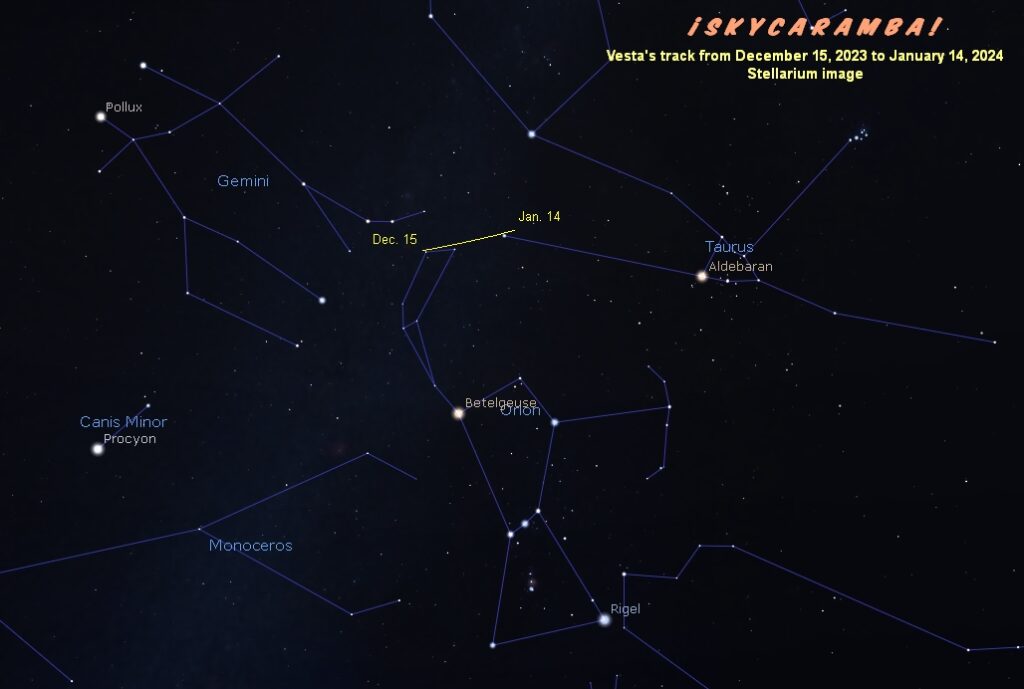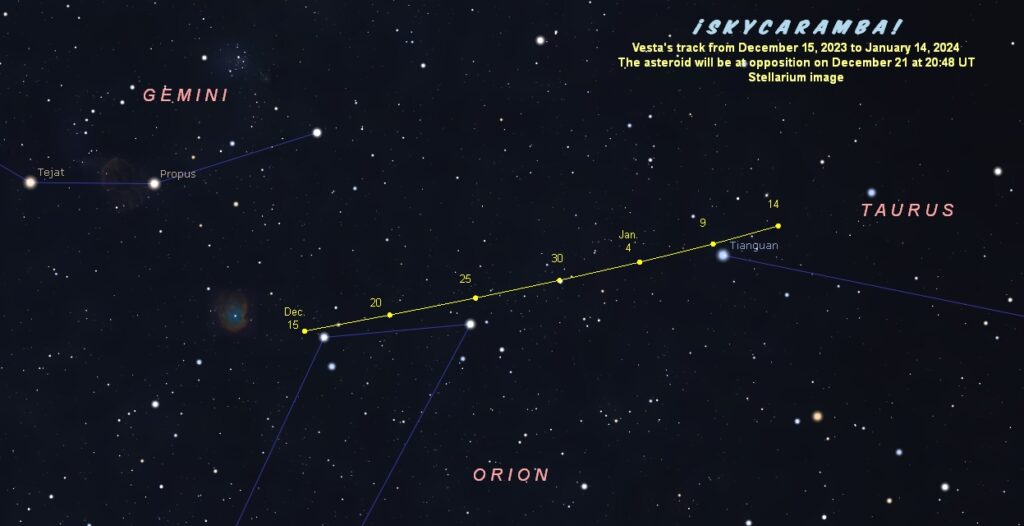A past-full moon is in the late evening and morning skies in Gemini when December begins. Apogee is on the 4th at 404,400 km distance. The moon will pass by Regulus in Leo that day. Last quarter is the next day with the moon below the lion. The moon passes near Zavijava in Virgo on the 6th. It passes Zaniah and then Porrima on the 7th. Then it’s near Spica on the 8th. This month’s Venus-moon pairing happens on the 9th. Look carefully and you’ll see the planet near the star Kang that morning.
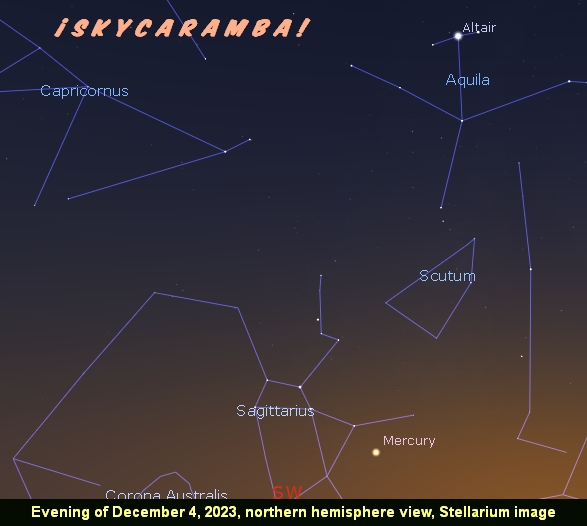
On the morning of the 10th, an even thinner crescent moon is near Zubenelgenubi in Libra. New moon is on the 12th at 23:32 UT with southern lunistice the next day at 28.2° from the equator. You may be able to spot Mercury next to a young crescent moon on the evening of the 14th. After passing through Capricornus and perigee at 367,900 km distance on the 16th, the moon will be near Saturn in Aquarius on the evening of the 17th. First quarter is on the 19th. After passing through Pisces, the moon’s near Jupiter on the 22nd. See a waxing gibbous moon pass the Pleiades on the 23rd and 24th.
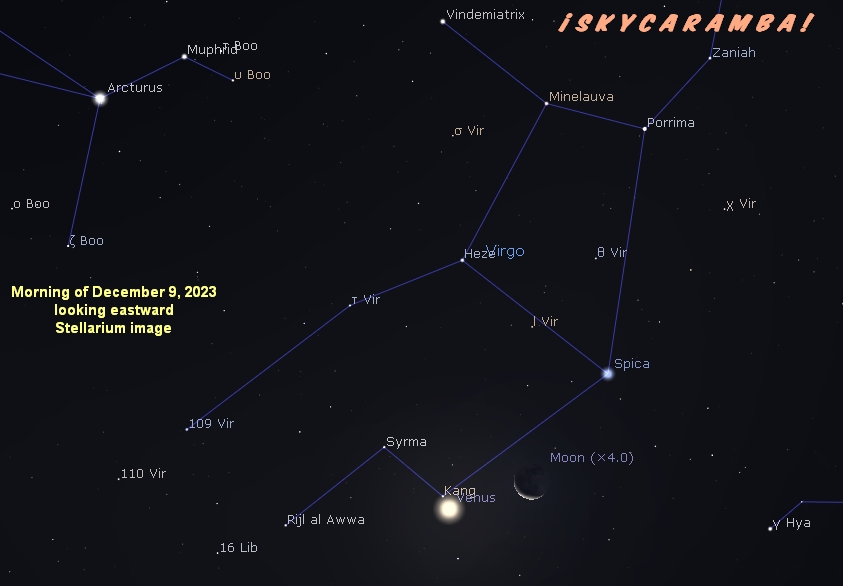
Northern lunistice, 28.1° from the equator, happens on the 26th. The moon is full at 00:34 UT on the 27th. It’s back to Gemini again on the 27th and 28th. After going through Cancer, a waning gibbous moon goes into Leo again and passes Regulus on the 30th.
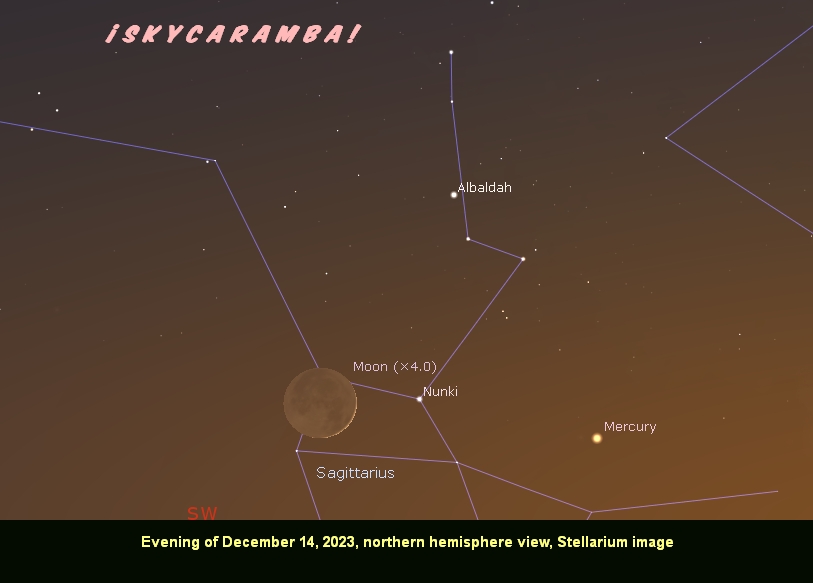
Your best chance to see Mercury is likely to be on the 4th. It’s at greatest elongation, 21.3° east of the sun, in the evening sky. As the messenger planet passes by the northern stars of Sagittarius, it will be 0.3° from Nunki on the 8th. On the 12th and 13th, Mercury will brush the Great Sagittarius Cluster. Also known as the Crackerjack Cluster and M22, the cluster contains at least 83,000 stars about 9,800 light years from us. You can see the cluster as a smear of light with the naked eye in a dark sky. But you’ll probably need binoculars or a telescope to see it with Mercury this month, because they’re setting in the glow of sunset. It may not be possible for most viewers even then. As already noted, the moon will be nearby on the 14th. It will be left of Mercury and the cluster. After that, Mercury goes retrograde and westward toward the sun. Inferior conjunction will be on the 22nd.
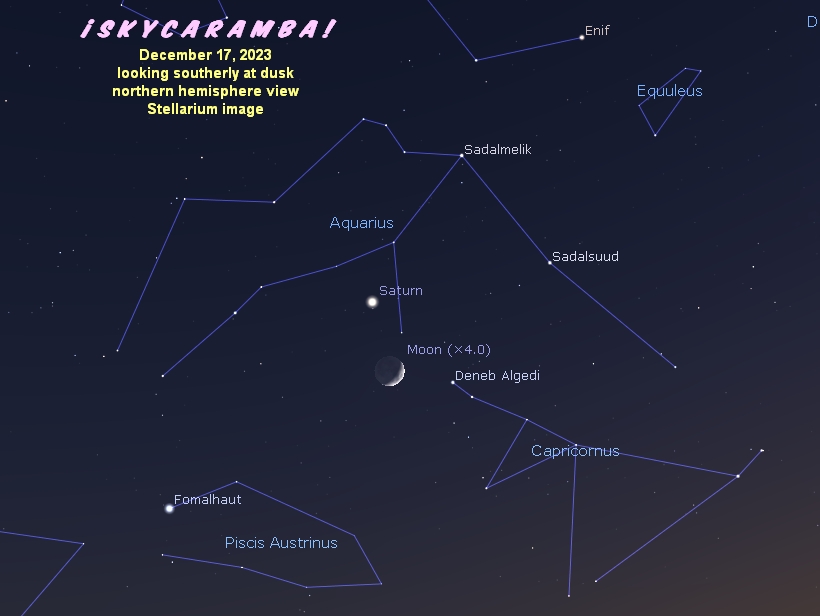
Saturn is higher up in the evening moving prograde through Aquarius this month. The moon is close on the 17th.
Jupiter is up nearly all night. It rises a little before the sun, so it’s already partway up the eastern sky as darkness begins. It’s moving retrograde near Cetus’s head for most of the month. After the moon passes by on the 22nd, the big planet appears to go stationary. It’s about to turn around, but you won’t see it moving much until January.
Uranus is a little east of Jupiter. It’s slowly moving retrograde all month.

Morning object Venus starts the month near Spica in Virgo. As already mentioned, Venus passes near a star named Kang on the 9th as the moon comes along. Then Venus leaves Virgo and moves on to Libra. On the 17th and 18th, it’s close to Zubenelgenubi. After passing though the middle of the Libra diamond, the planet exits near Zubenelhakrabi on the 25th. It’s approaching Acrab in Scorpius as the month ends.
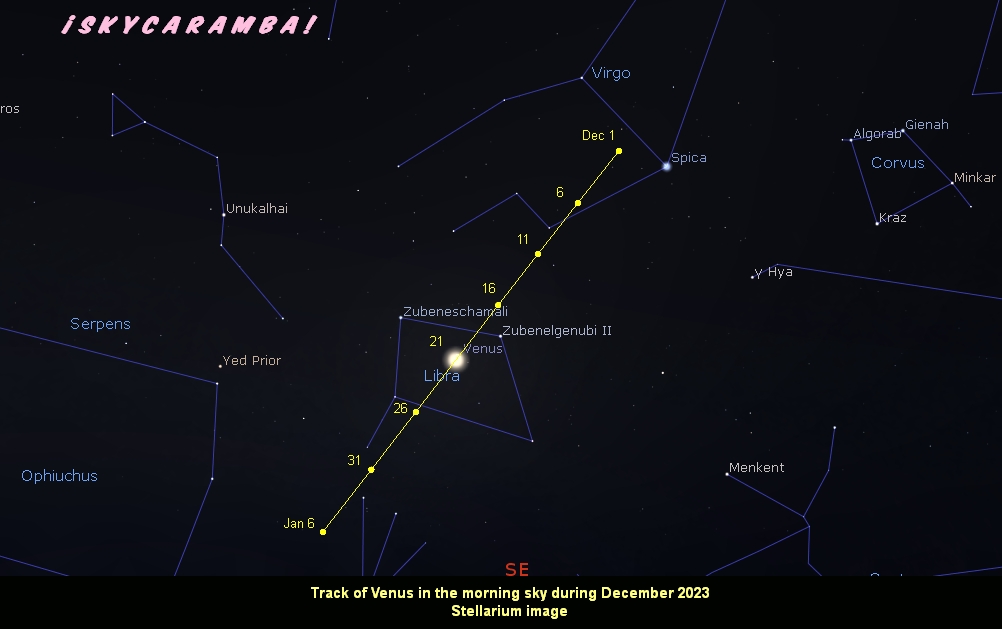
It will be challenging, but a few careful observers near the equator may spot Mars rising in the dawn in the last days of December. The red planet is going “down” or eastward while Mercury comes up alongside it on the 28th. Mercury keeps going upward while Mars goes down. This is illusory, of course. Mars is moving prograde or eastward, but the sun is moving eastward faster. So Mars’s elongation is increasing.
The Geminids meteor shower’s predicted peak is on the 14th. That’s just a couple days after new moon. And since Gemini rises in mid-evening, that young crescent moon will have set already. So prospects are good.
The December solstice happens on the 22nd at 03:28 UT.
The asteroid Vesta is at opposition on the 21st. It’s in the asteroid belt between Mars and Jupiter. Its opposition distance is 1.58 astronomical units or about 237 million kilometers. At magnitude 7, Vesta is too dim for naked eye viewing but easily seen in binoculars. It’s moving from a space beneath the feet of Gemini over the head of Orion and toward the horns of Taurus. Seeing an object like Vesta is most satisfying when you look on several different nights so you can appreciate how it moves. Seeing it on just one night, you might not even be sure that it’s Vesta. These images can help you find it.
